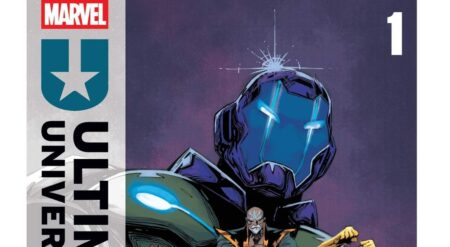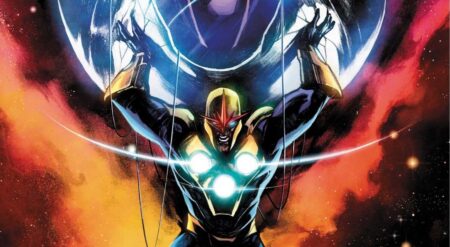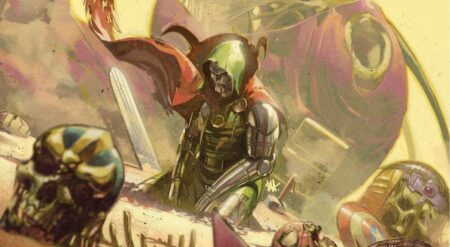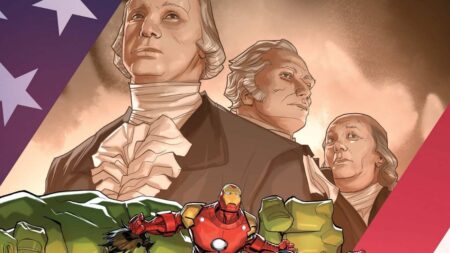
Ant-Man #2 is written by Al Ewing, illustrated by Tom Reilly, colored by Jordie Bellaire, and lettered by VC’s Cory Petit. It’s published by Marvel Comics. “Imposter Syndrome” turns its focus on another Ant-Man: specifically, Eric O’Grady, who became the Irredeemable Ant-Man after Scott Lang’s untimely death. Taking place shortly after the events of Irredeemable Ant-Man #1, “Imposter Syndrome” finds O’Grady attempting to find more Pym Particles to power his suit. He winds up running into the future Ant-Man from the first issue, as well as the original Ant-Man Hank Pym!
Irredeemable Ant-Man is an interesting series in terms of concept and timing. The comic was originally developed by Robert Kirkman and Phil Hester but came out right when Kirkman’s work on Invincible and The Walking Dead began to take off. True to its title, it also made O’Grady one of the most outright despicable superheroes on the planet. He stole, lied, and in one of the series’ more infamous moments, he used his newfound powers to become a peeping tom. As he did with the first issue and its 60’s-era setting, Ewing perfectly captures the cadence and dialogue that Kirkman used for the Irredeemable Ant-Man series, right down to the opening page featuring a recap of events from an actual ant.
Ewing also shows off his knowledge of Marvel’s history, which has served him well in other series. At this point in time, Lang was presumed dead following the events of Avengers: Disassembled, and the Pym that O’Grady encounters was actually a Skrull preparing for the shape-shifters’ secret invasion of Earth. Great comic writers, especially those working in established universes like Marvel and DC, can often use previous events to their advantage. It looks like that’s the approach Ewing is taking for this miniseries — I can’t wait to see how it all comes together.
Also leaning into the look and feel of Irredeemable Ant-Man is Reilly, whose artwork shifts to resemble Hester’s more angular, dynamic style. A fun experiment would be to take issues of Irredeemable Ant-Man and hold them up side to side to see if you can differentiate who drew what. It’s a serious application of skill that instantly catapulted Reilly into my list of “artists to keep an eye out for.” He also continues to have fun with the shrinking and time travel elements; a battle between O’Grady and Pym has the duo shrinking to subatomic size, and another sequence finds O’Grady literally tumbling through past events in his life. Bellaire gives both Ant-Men their own distinct color scheme, as O’Grady’s armor is a darker shade of red than Pym’s lighter red and blue. And topping it all off, Petit brings back the classic thought balloons when depicting O’Grady’s inner turmoil.
Ant-Man #2 turns its focus on the Irredeemable Ant-Man, Eric O’Grady — resulting in a blast from the past in more ways than one. The ending raises more questions than answers, but it’s kept me hooked. And with the next issue set to focus on Scott Lang, this series continues to be one of the more interesting books in Marvel’s stable.
Ant-Man #2 is available now wherever comics are sold.
Ant-Man #2
TL;DR
Ant-Man #2 turns its focus on the Irredeemable Ant-Man, Eric O’Grady — resulting in a blast from the past in more ways than one. The ending raises more questions than answers, but it’s kept me hooked. And with the next issue set to focus on Scott Lang, this series continues to be one of the more interesting books in Marvel’s stable.







